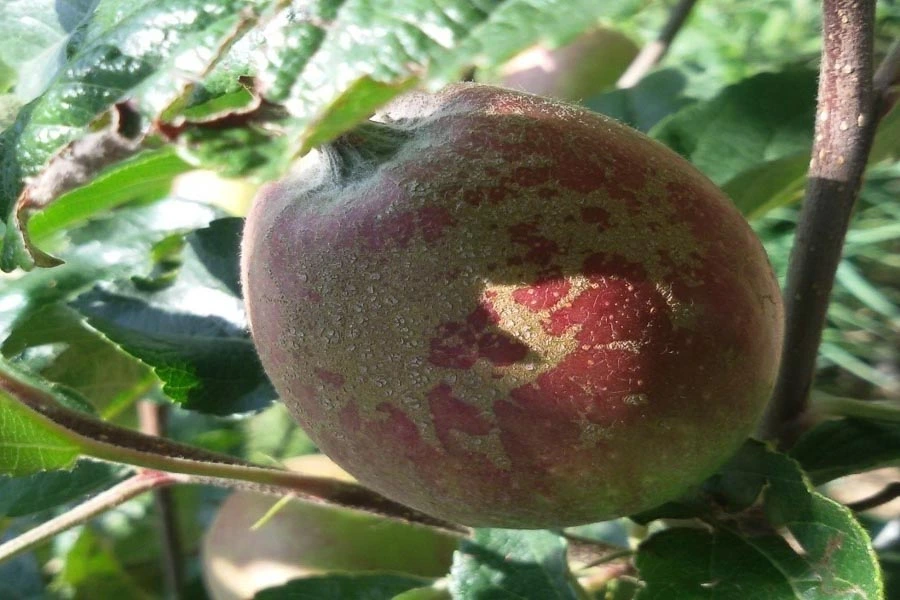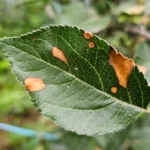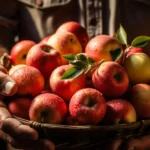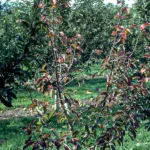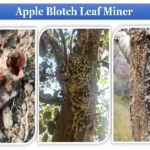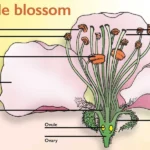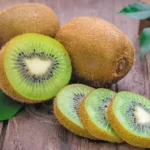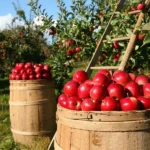Russeting in Apple:
Apple russeting is a natural phenomenon that affects the skin of apples, causing it to develop a rough, brown, and slightly textured appearance. It typically appears as small, corky patches or scaly lines on the apple’s surface. Russeting can vary in intensity from mild to more pronounced, covering a significant portion of the apple’s skin. Support us by subscribing our YouTube Channel
Russeting may appear on any part of the fruit, however, pedicel end (stem end) and calyx end of the fruit are more susceptible. Apples are prone to russetting within 50 days after petal fall when fruits are delicate and grow rapidly. The fruits of younger or vigorously growing trees seem more prone to russeting than older and slower-growing trees. The thin-skinned apple cultivars are also more susceptible to russetting than thick-skinned apples. Golden Delicious is one of the most susceptible variety while red varieties are not as likely to develop russetting.
Shopian Ambri has been found tolerant to russeting of any kind. When russetting occurs early in the season, the skin becomes thin and tight. Fruit can’t stretch with the developing, enlarging fruit and hence it cracks. When russeting occurs later in the fruit development, cracks don’t form but the skin becomes brown, dull, and rough. Want to know more about post harvest urea spray click here
Causes of Apple russeting:
The possible factors of apple russeting may include the following.
Weather:
Weather-induced russeting, initiated within 30 or 40 days of bloom, is the major cause of russetting in some countries of the world. It is thought to be caused by wetness from heavy dew or rainfall on the fruit surface for several hours along with cold temperatures. Russeting is also caused by frost during early stage of fruit development in the month of April. High relative humidity and poor air circulation in tree canopy is also known to predispose apples to russetting.
Agricultural chemicals:
Some agricultural chemicals that contain sulphur, copper, zinc, calcium, as also the products formulated as Emulsifiable Concentrates are known to cause russeting in apples especially in those orchards with slow drying conditions (owing to high relative humidity & poor air circulation) particularly when sprayed up to Fruit Development-II stage. Spraying of fungicides along with insecticides or plant nutrients is another reason to induce fruit russetting. Most of the growers use higher concentrations of pesticides than recommended by SKUAST-K which also induce russeting in apple fruits.
The practice of washing out of the apple orchards with chemicals makes a lot of chemical active ingredients to accumulate on fruits which causes russeting issues. Chemical russetting can be found either on stem end when calyx end bends downwards or on calyx end when it stands upward. Some chemicals like, Tebuconazole, Sulphur, copper oxychloride when sprayed at early stage of fruit development before 15th of June don’t only cause russeting but also prove phytotoxic to apple leaves.
Biotic causes
Various fungi including powdery mildew pathogen (Podosphaera leucotricha), bacteria and viruses have been associated with apple russeting. Aureobasidium pullulans and Rhodotorula glutinis are fungi common on the surface of apple fruit and leaves and have been associated with fruit russeting. Fruit are susceptible to this kind of russet up to at least 4 weeks after petal fall. The disorder is also genetically controlled. Some varieties like, Jonathan, McIntosh, Golden Delicious are more likely to develop russeting than other varieties.
Nutritional/Physiological causes:
Weak or diseased (Root/collar rot and Cankers) apple trees are also known to develop russetted fruits as proper nutrient supply is not reaching to the fruits. It has been observed that apple trees of varieties like Golden Spur or Golden Delicious develop russeting symptoms when in heavy fruit bearing.
Management of Apple Russeting:
Being skin-deep only, russeting does not influence storage life of the fruit, though it makes the fruits less attractive in the market, however, russeting associated with cracking of the fruits affects the storage life of the fruit. The Practices that can reduce russeting in apple fruit include,
- Deep pruning of low lying orchards to facilitate air circulation and reduce relative humidity in the microclimate. This will create fast drying conditions after rains and pesticide application.
- Pesticide spraying should be conducted always in dry conditions. For russetting prone orchards/varieties, it is better to spray pesticides before heavy rain.
- After the month of June when temperature increases, it is better to spray pesticides early morning after dew evaporates. In summer months evening winds often brings rain showers, thereby making spraying solutions to dry slowly.
- Pesticides/nutrients should be sprayed at recommended doses only.
- Washing out of trees by spraying excessive quantity of pesticides should be avoided.
- Mixing of Chemicals for spraying should be avoided particularly at early stage of crop growth.
- In the russetting-prone orchards, nutrient sprays like; calcium, zinc, boron etc., should be used at reduced doses.
- Low or high pH in the orchard soil should be corrected by applying hydrated lime and inorganic Sulphur, respectively.
- Whenever dryness/drought conditions prevail, particularly at early stage of crop growth, irrigation should be applied immediately. Wherever, irrigation is not possible, calcium and boron sprays should be conducted at 10-15 days intervals.
Authors: Dr. Tariq Rasool Rather, Plant Pathologist, FOA, Wadura, SKUAST-K Dr. Zahoor Ahmad Bhat, Senior Scientist Fruit Science, FOH, SKUAST-K

